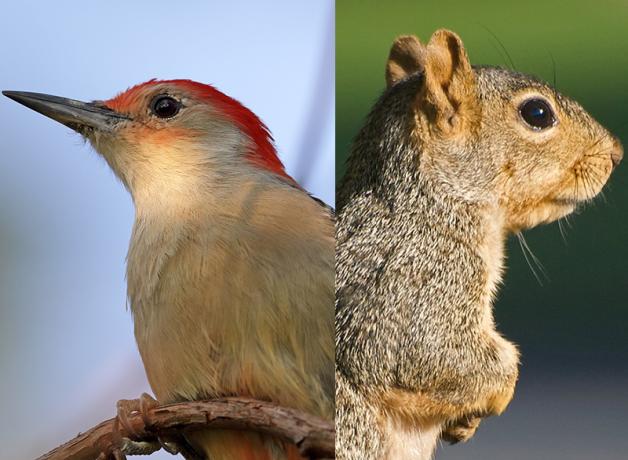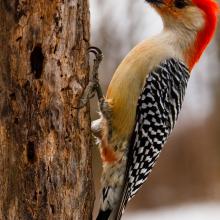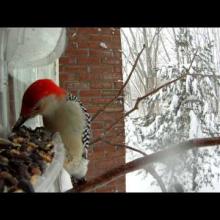BirdNote®
Squirrel or Bird?
Written by Conor Gearin
This is BirdNote.
[Fox Squirrel barks]
Identifying birds by ear means getting familiar with each species’ unique voice. And that means learning the other voices in the ecosystem, too. Like the Fox Squirrel’s barks:
[Fox Squirrel barks]
This squirrel’s alarm barks could at first sound like the calls of a Red-bellied Woodpecker:
[Red-bellied Woodpecker calls]
But with enough practice, you can hear how the squirrel’s barks are more throaty, and more frequent than the woodpecker. Here’s the squirrel again:
[Squirrel barks]
And the woodpecker:
[Red-bellied Woodpecker calls]
That’s not the only voice that could trip you up in the forest — take a listen to this cute little trill:
[Eastern Chipmunk chip-trill call]
While it might sound a bit like a kingbird, it’s really the chip-trill call of a chipmunk, given when they are telling another chipmunk to back off.
[Eastern Chipmunk chip-trill call]
In comparison, Eastern Kingbirds sound more shrill, increasing in volume rather than decreasing as they continue:
[Eastern Kingbird call]
Here’s the chipmunk again:
[Eastern Chipmunk chip-trill call]
And here’s the kingbird:
[Eastern Kingbird call]
Eventually, you might recognize each species’ voice, like recognizing a friend. All it takes is time.
[Eastern Chipmunk chip-trill call]
For BirdNote, I’m Ariana Remmel.
###
Senior Producer: Mark Bramhill
Producer: Sam Johnson
Managing Editor: Jazzi Johnson
Content Director: Jonese Franklin
Bird sounds provided by The Macaulay Library of Natural Sounds at the Cornell Lab of Ornithology, Ithaca, New York. Red-bellied Woodpecker ML 230037631 recorded by Wil Hershberger, and Eastern Kingbird ML 534398 recorded by Wil Hershberger.
BirdNote’s theme was composed and played by Nancy Rumbel and John Kessler.
© 2023 BirdNote March 2023 / 2025
Narrator: Ariana Remmel
ID# sound-33-2023-03-21 sound-33







